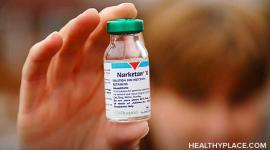What is the Star*D Research Project?

The Star D depression research project and how the results can help treat your depression.
Gold Standard for Treating Depression (part 4)
The Star*D (Sequenced Treatment Alternatives to Relieve Depression) research project addressed the fact that only some 30% of people who are initially treated with an antidepressant for depression receive significant symptom relief while others often struggle to find a plan that works for them. The researchers asked the question: What are the options for the 70% of the people treated for
depression who do not respond to their initial antidepressant medication? This seven year study, sponsored by the National Institute of Mental Health (NIMH), followed 2876
patients in order to find the best course of medication treatment and in what sequence the treatment should unfold if the first chosen antidepressant was not successful.
What Were the Results?
The initial phase of the research found that aggressively increasing the antidepressant dose (often a significantly higher dose than usually prescribed) of a person's first choice medication provided remission usually within 8-12 weeks for 30% of participants. For those who did not experience remission with the higher doses, a second treatment plan was implemented where a new drug was added to the original drug (augmentation) or the original drug was changed to a different class of antidepressants.
The results of these changes showed that up to an additional 30% of participants in the second phase experienced remission with the help of another medication added to the first or through switching to a new antidepressant medication completely. This is good news for those resistant to initial antidepressant treatment. Psychotherapy was added to this phase of the treatment and the results are pending. Past research into the role of psychotherapy in the treatment of depression is discussed later in this article. The final research phases explored additional treatment options for those who did not respond to the first two treatments and results are pending.
The Importance of Regular Antidepressant Side-Effect and Depression Symptom Monitoring
During all phases of the Star*D project, participants monitored the level of their depression, as well as the side effects caused by the medications, on a regular basis. Researchers found that filling out these weekly charts was one of the major factors in successful treatment. There were two reasons for this:
- When participants were clear on their specific medication side-effects, they were better able to tell a researcher how well they tolerated a medication dose. This led to either reducing or increasing the dosage, switching to a different class of antidepressants, or augmenting a medication.
- The second step of rating the level of depression a client felt on a weekly basis not only helped the researcher measure the effectiveness of the treatment, it also helped the participant see that their depression was often significantly better; even though they did not feel a change.
This self-monitoring, along with antidepressant treatment, showed that when participants are involved in their own care, treatment outcomes are much more positive. The study also found that frequent contact with a researcher helped participants feel more positive about their treatment.
Getting a depressed person through the first weeks of treatment can be very challenging as the hopelessness felt with depression can make a person loose faith in a medication before it has had time to work. Another problem occurs when a person who is already feeling pessimistic about the chance of recovery ends antidepressant medication treatment due to minor side-effects. The conclusion is that people with depression must give their medications time to work before ending treatment.
Dr. John Rush, principal investigator of the Star*D project tells HealthyPlace.com, "Ideally, in treatment, visits should be as often as required- when severely depressed, weekly or every two weeks contact is optimum. When a person is less symptomatic, contact can be every three weeks to three months as needed." This contact can be with the healthcare professional who monitors the depression. If this contact is not realistic, a person can use the self-monitoring forms to determine when more care is needed. It's also a great way for a person with depression to participate in his or her own healthcare and become more realistic about the impact depression and medications for depression have on daily life.
Download copies of these self monitoring charts and share the results with your doctor:
How Can the Star*D Findings Help Relieve My Depression?
The Star*D findings can greatly impact the way you are treated for depression. First of all, just knowing that a different course of treatment that you may not have experienced in the past could work for you, offers hope for the future. Also, you can have more control over your treatment by monitoring antidepressant side-effects and your level of depression. This will help you work more closely with a healthcare professional to decide your best treatment path.
To Review:
1. When initial antidepressant treatment is not successful, doses typically need to be much higher than currently prescribed as long as the side- effects are tolerable.
2. If the first drug doesn't work, there are some good results with augmenting or switching drugs.
3. Weekly monitoring of drug side-effects and severity of depression symptoms increases a person's role in their own healthcare and improves the chance of successful antidepressant treatment.
4. And though it is not always realistic, regular contact with a healthcare professional can have a significant impact on successful medication treatment.
Dr. Rush notes, "Tools used in research settings (depression rating scales, etc.) are not routinely used in practice, which may contribute to the high rates of inadequate treatment with antidepressant medications in routine care. Our results also suggest that the use of depressive symptom and side-effect ratings to guide treatment is feasible in "real world" practices as well as effectiveness trials and can be used to monitor patient progress, to adjust the treatment, and to make clinical decisions."
What Should I Tell My Doctor About the Star*D Research?
Keep in mind that most people receive prescriptions for antidepressants from their family doctor. For a variety of reasons, many doctors can't keep up with the latest research in every field. You may have to bring your healthcare professionals up-to-date on the Star*D research so that you can work as a team to find the depression medication treatment that works best for you. Healthcare professionals can also visit https://www.nimh.nih.gov/funding/clinical-research/practical/stard/allmedicationlevels.shtml for more information on the study and how they can use the findings in their own practice.
video: Depression Treatment Interviews w/Julie Fast
APA Reference
Fast, J.
(2009, January 1). What is the Star*D Research Project?, HealthyPlace. Retrieved
on 2026, January 2 from https://www.healthyplace.com/depression/depression-treatment/what-is-the-stard-research-project-gsd



